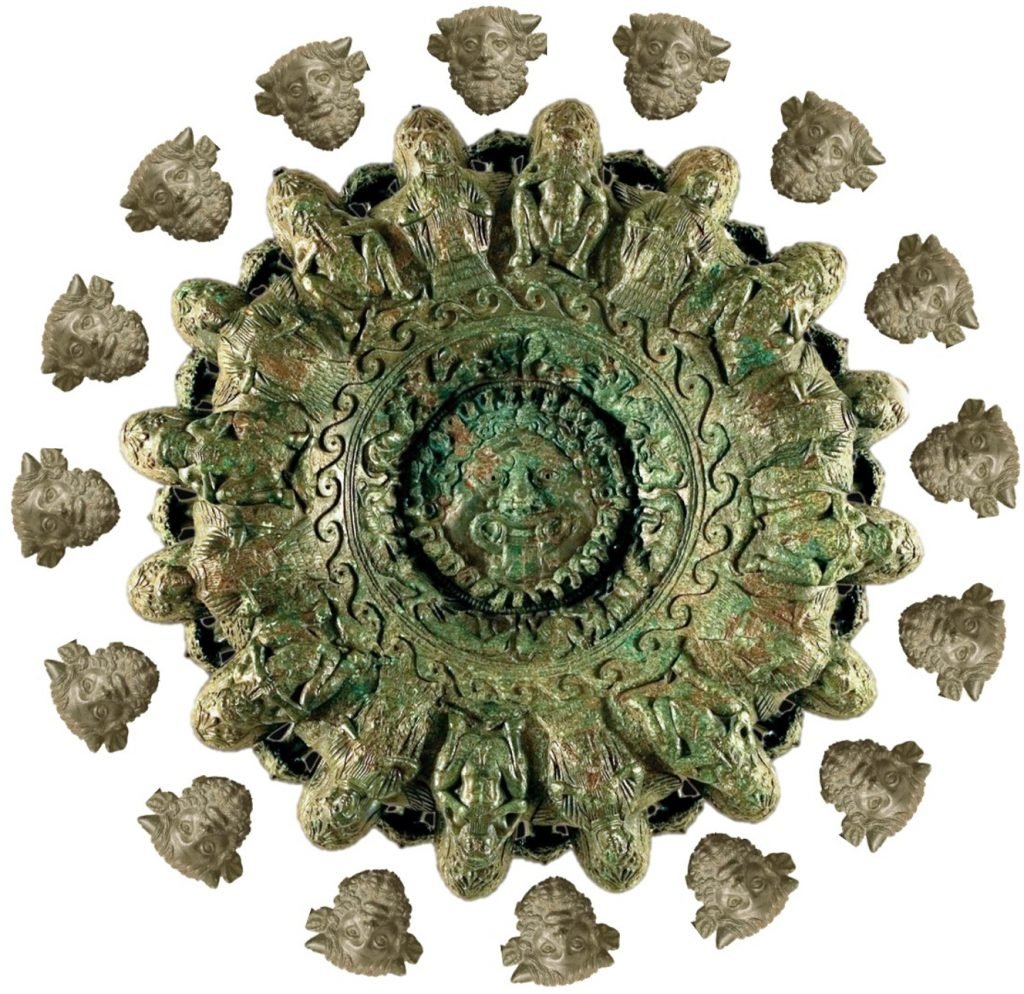Archaeology & History
Is This 2,500-Year-Old Bronze Lamp a Cult Object?
The Etruscan object was first discovered in 1840.

An ancient bronze lamp held in the collection of the Etruscan Academy Museum (MAEC) is the subject of a new paper published in De Gruyter’s Etruscan and Italic Studies, re-evaluating its iconography. The research team from the University of Melbourne have concluded that the lamp was created in celebration of Dionysus, the Ancient Greek god of fertility, festivity, madness, wine, and theatre.
A Re-Evaluation of the Iconography of the Etruscan Bronze Lamp of Cortona by PhD student Ronak Alburz and Associate Professor Gijs Willem Tol, suggests that the lamp is around 2,500 years old—revising its date to the Late Archaic period, around 480 B.C.E. Lead author Alburz theorized that the decoration of the lamp “represents the Dionysian thiasus,” a group of devotees to the god, and that it was perhaps used “in a cultic performance… in celebration of Dionysus.” The paper concluded that the lamp may have been “employed within a temple or sanctuary setting associated with Dionysus.”
The lamp is decorated with figures with bull horns, dolphins (a sacred animal associated with the god Dionysus), and Silenus (a companion and tutor to Dionysus) around a central face. In ancient art and literature, Dionysus is often depicted with the horns, which can be seen in coins of the god, but never in sculptural representations. The presence of his horns is also mentioned in Ovid’s 8 C.E. narrative poem Metamorphoses.
Members of the Dionysian cult celebrated two festivals dedicated to the honor of the god, held twice a year in line with harvest seasons. Mark Anthony, Spartacus, and Alexander the Great were all believed to have been members of the Dionysian cult. Mark Anthony had himself depicted with an ivy-leaf crown—often worn by Dionysus in artistic depictions—in order to defend his divine right to rule.
The large lamp is almost 24 inches in diameter and weighs 127.25 pounds. It was found in a ditch on land owned by the Cortonese noblewoman Luisa Bartolozzi Tommasi in 1840, along with an inscribed bronze plaque. It was dated to the ancient Etruscan civilization, which flourished in Italy between the 8th and 3rd century B.C.E. The Roman-Etruscan Wars saw the Etruscan civilization assimilated into the Roman Republic in the late 4th century B.C.E.
The Etruscan Bronze Lamp of Cortona is thought to be relatively unique, with very few similar artifacts found in ancient art of the region. This has made it difficult for academics and researchers to draw conclusions about the lamp’s iconography or purpose. Before this paper’s release, studies had suggested that the bull-like figures around the edge of the lamp were depictions of Achelous, the Greek god of fresh water.
Other icons on the lamp are thought to refer to astronomical symbols, but this has not been fully explored by researchers. Around the edge of the lamp, Dionysus features in each of the sixteen segments representing the sun in the Etruscan sky. This has been interpreted to symbolize the god’s journey through the universe. The University of Melbourne researchers proposed this new interpretation, which “allows for every single decorative motif to be part of the same mythological narrative.”





